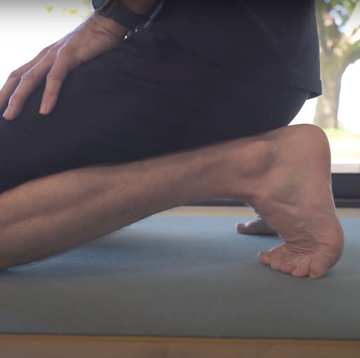Active recovery: Exercises such as planks, clamshells and bridges will strengthen weak glutes and hips, which are common sources of hamstring strains. It may be helpful to work on agility. In a University of Wisconsin, US, study, runners with acute hamstring strains who completed a rehab plan that included agility work recovered faster and were less likely to be reinjured than those who didn’t work on agility.
Relapse prevention: Do bridge walkouts. Lie on your back, with knees bent, hips raised, and with a straight line from knees to neck. Now walk your feet away from you; the straighter your legs and lower your hips, the harder it is. This strengthens the hamstring because it’s lengthening, which is consistent with the action of the muscle when you’re running.
Runner beware: Avoid doing speedwork until your pain is completely gone. ‘The hamstring most often gets injured when the muscle is quickly lengthened, as it is when sprinting,’ says Colleen Brough, assistant professor at Columbia University’s physical therapy programme in the US.
READ: Best wireless headphones
READ: Hamstring injuries
READ: How to prevent and treat achilles tendonitis














